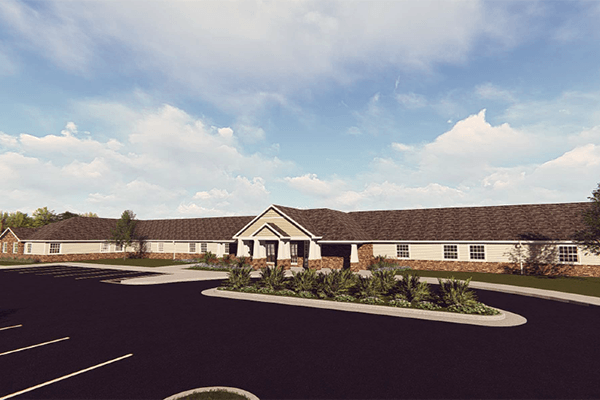Artis Senior Living Selling Units In Memory Care Facility In Chestnut Ridge
By Tina Traster
A 64-unit senior living facility under construction in Chestnut Ridge will become Rockland County’s first memory-care-only facility when it opens in April. Artis Senior Living, with more than 17 facilities, including one in Briarcliff Manor, and seven underway, builds memory care senior living facilities, a distinct form of long-term care aimed at meeting the needs of people with Alzheimer’s disease, and dementia.
“Most assisted living communities have dementia care but free-standing memory communities are rare,” said Amy Beth DePreker, vice president of sales and marketing at Artis. The company plans to build memory care facilities in Tarrytown, Somers and Cold Spring Harbor.
The baby boomer generation will grow from 50 million today who are older than 65 to 100 million by 2035. The number of people who are going to need memory support is continuing to burgeon. Memory care facilities recognize that there’s not a one-size-all for residents. Rather, each resident is at a different stage of memory loss.
Many families are turning to memory care communities because they provide needed expert care in an environment that has safety features and trained staff available around the clock. The structured environment uses schedules, safety features, and programs designed to cultivate cognitive skills.
One of the goals of memory care is to help slow the progression of Alzheimer’s or dementia by fostering a senior’s ability to feel purpose, a sense of satisfaction and enjoyment on a daily basis. For instance, a community may engage residents with brain fitness exercises and memory games, and provide specialty food programs that aid fighting the effects of Alzheimer’s and dementia.
“The disease is progressive but these people are still there,” said DePreker. “We try to bring dignity and quality of life to the end.”
The 37,068-square-foot one-story Rockland facility on Chestnut Ridge Road will offer residents private 250 square-foot to 300-square-foot suites with private bathrooms. Spouses of memory care patients can live in the units. Artis has just begun marketing the units.
“Our environment is a home; it’s designed to look like a home, it’s not institutional,” said DePreker.
The main building of the Artis facility will house the “town center,” which will include the dining room, an art studio, a wellness hub, a nurse’s office, a beauty parlor. Residence clusters of 16 residential units apiece radiate away from the main square into “neighborhoods” designed in themed décor including nautical, Victorian, stone and brick. The entire “secure community” has 12 exists that lead to three acres of passive outdoor space. Residents can wander and navigate a wayfaring system but cannot get outside the locked facility. Bringing residents with cognitive impairments into natural environments such as secure courtyards and garden spaces can help improve attention, awareness, verbal and nonverbal expression, and sleeping patterns.
DePreker expects most residents will come from a five to ten-mile geographic radius. The facility will include artwork that references historical landmarks. Artwork can help with navigation and provide cues for where residents are in a building. Some memory care residents are more tactile in nature, so having textured artwork gives them something to interact with and explore.
Many memory care residents have problems sleeping, wander at night or have daytime agitation. More memory care providers are looking for ways to improve residents’ circadian rhythms through lighting, including more natural light, as well as adjusting lighting throughout the day to mimic the natural progression of day into night.
As technology continues to evolve, memory care communities are finding ways to incorporate it meaningfully in their programming, family engagement, safety and security. High-tech solutions may include virtual reality programs to help residents reenact their favorite hobbies, like fishing, or to have a peaceful, calming experience to help them relax and reminisce.
In addition to pet therapy experiences, some communities have robotic pets that allow residents to hold and respond to soft, lifelike animals. Many communities use technology to gather useful information about resident activity. They can track a resident’s participation in different activities over time so they can recognize patterns and sometimes discover important connections.
Some communities are experimenting with wearable devices and other unobtrusive monitoring devices to help them keep track of sleep patterns, heart rates and location.
Medicare covers inpatient hospital care and some of the doctors’ fees and other medical items for people with Alzheimer’s or dementia who are age 65 or older. Medicare will pay for up to 100 days of skilled nursing home care under limited circumstances.
However, custodial long-term nursing home care is not covered.
Due to the specialized dementia care offered at memory care units, costs are higher than assisted living. On average, one can expect to pay approximately $3,700 per month for assisted living and $5,700 per month to reside in a memory care unit.
The cost to reside at Artis is $96,000 annually, though there is a veteran benefit with a steep discount. The facility accepts long-term health care insurance.
DePreker says the average stay in a memory care unit is about two years. In nearly 90% of cases, residents die there.











